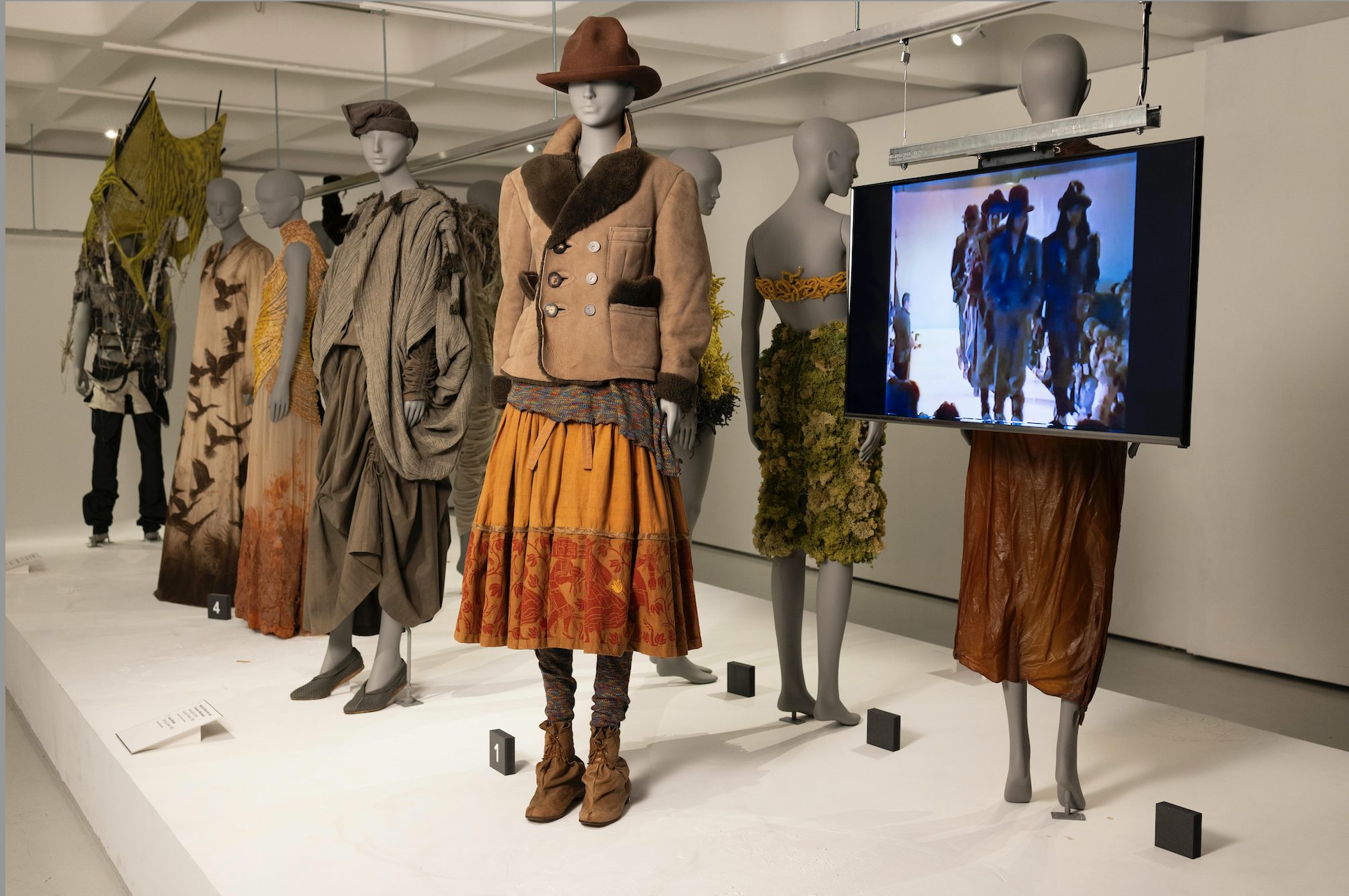Mud, sweat and tears at the Barbican
Dirty Looks, a new exhibition in London, examines fashion’s complicated relationship with dirt and decay, and society’s changing ideas of beauty
If you were befuddled by Balenciaga’s ‘destroyed’ shoe line – sneakers that were designed to look deliberately ravaged and yet retailed for $1,800 – you might want to head over to the Barbican’s new fashion show to make sense of them.
Titled Dirty Looks: Desire and Decay in Fashion, the show marks the Barbican’s first exhibition devoted to fashion for eight years and features pieces from over 60 renowned fashion houses, as well as emerging designers from across Europe, Asia, Africa and the Americas.
It traces high fashion’s attraction to dirt and mud back to the early 1980s and the “aesthetics of mud” that made their way onto the catwalk via designers including Vivienne Westwood and Malcolm McLaren. A joyful video recording of a runway show featuring models dancing to Go Wild in the Country by Bow Wow Wow along with a text from Westwood (which closes with “is mud my middle name?”) accompanies clothes from the designers from this period, plus others who were influenced by this approach.



In Westwood and McLaren’s hands the use of earth and dirt provides a connection to folklore and a challenge to ideas of what constitutes luxury and refinement. McLaren also sought to reflect how “the roots of our culture lay in primitive societies” and his designs demonstrate influences from around the world, though this context can feel jarring today, when, as the gallery notes point out, “greater sensitivity is shown to the romanticisation of traditional cultural forms of dress”.
Rebellion appears throughout the exhibition in different guises. It is a particular pleasure to see items from Hussein Chalayan’s 1993 Central Saint Martins’ graduate show The Tangent Flows, which featured dresses he had buried with iron filings in a friend’s London garden for several months before resurrecting them to display on the runway. The resulting garments were heavily rusted and stained yet Chalayan’s audacious approach won him immediate fame, with luxury boutique Browns buying the whole collection and later displaying it in its window, a great honour for the graduate designer.
As well as providing us with outfits, fashion’s role is in part to reflect, question, and prod at society’s strictures, and to offer us ways to rebel or find ways past them
Other experimental designers that came to the fore in the 90s, including Alexander McQueen and Olivier Theyskens, similarly imbued their clothes with storytelling. Here their work is displayed in a section exploring ‘romantic ruins’, in part referencing the sense of history, wealth and class that can be tied up in clothing. Included here are garments from McQueen’s controversial Highland Rape collection, which referenced his Scottish heritage, specifically the Jacobite Risings and the Highland Clearances, which the designer referred to as “England’s rape of Scotland”.
This is a show largely for fashion purists, with the focus placed squarely on the garments themselves. These are displayed in the upstairs space on a series of mannequins (amongst some artful ‘decaying’ staging), with only a few videos on show to demonstrate their wider cultural context or how these garments were received at the time of their launch. This means that even sections of the show that would clearly have been viewed as excessive or extreme, such as the ‘leaky bodies’ display featuring Jordanluca’s pee-stained jeans among other items, become somewhat muted.

The inclusion of a section of Michael Lucid’s Dirty Girls film therefore leaps out for its difference, presenting real school girls talking to camera and, loaded with youthful exuberance, pointing out why we should accept their rejection of feminine ideals in favour of a grubbier, grungier look.
Downstairs the display gets looser and veers more towards art installation, with displays by new and emerging designers who are using clothing in part to examine and challenge societal norms. Michaela Stark’s Growing Pains (2025) features images of the artist’s own body trussed into corsets that painfully reshape and almost deform the flesh in a comment on our struggle to accept imperfections. Elsewhere, negative bodily elements are transformed – in the dresses of bio-designer Alice Potts, sweat becomes glittering crystals over time.
A set of designs addresses the vast waste created by fast fashion, and how this trash is reshaping the environments of Ghana, Kenya and Chile with piles of discarded and unwanted clothes polluting the landscape. Designs from British-Indian-Nigerian designer Priya Ahluwalia and Ugandan designer Bobby Kolade see some of these garments repurposed into new looks.


Ideas of class and power echo throughout the show, from its entrance – where pairs of Wellington boots owned by two ‘queens’ of British culture, Queen Elizabeth II and Kate Moss, are displayed – to its questioning of the global supply chain that gives today’s fashion industry such a dirty name by its conclusion.
The fact that the aristocracy or the wealthy have permission to wear clothes that are grubby or frayed and yet still retain their power is also a recurring thread. This brings us back to those troubling Balenciaga trainers, so expensive to be out of the reach of most of us and yet somehow mocking our attempts to make sense of them – why should we desire these ugly, broken things?
As well as providing us with outfits, fashion’s role is in part to reflect, question, and prod at society’s strictures, and to offer us ways to rebel or find ways past them. The designs in this show demand us to push against glossy perfection and celebrate the risks, the mess, the experiments and the mistakes that are inherent in being alive. What we don’t necessarily have to do though, is wear them.
Dirty Looks: Desire and Decay in Fashion is on show at the Barbican in London until January 25; barbican.org.uk




